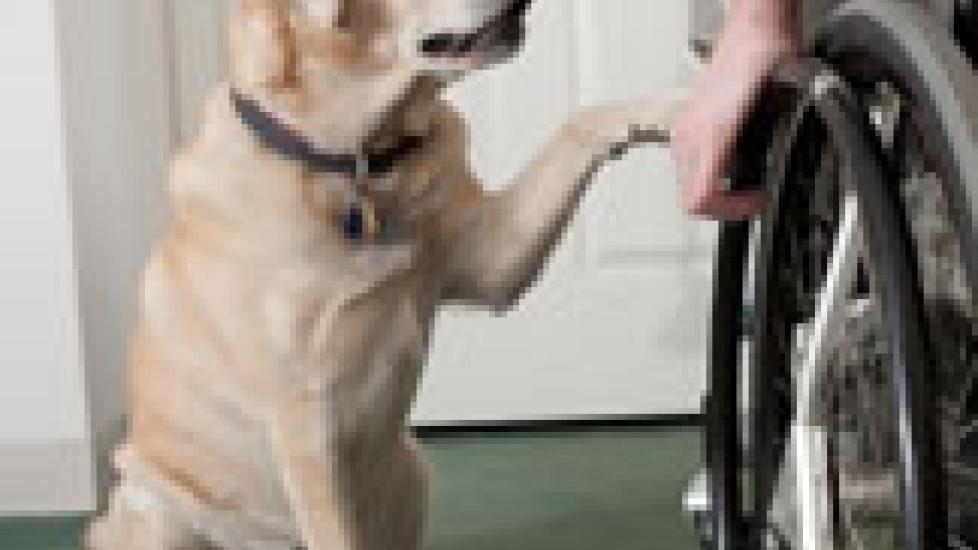A Service Dog's Death, Given Unselfishly
On this, the passing of another year following the September 11th terrorist attacks on the United States, I remember those who gave their lives in service, and I find myself considering the special relationship between owners and working dogs.
Working dogs, unlike “average” pets, are trained to perform specific tasks and/or assist their owners/handlers. The definition encompasses dogs trained for recreational purposes or competitive purposes, but most typically working dogs are associated with performing tasks related to rescue, service, therapy, detecting medical emergencies, or search and retrieval purposes.
I’ve treated a few working dogs during my career as an oncologist. When any pet is diagnosed with cancer, it is devastating news. People would easily agree that it’s not fair for an animal to develop disease; yet to me there is something particularly heartbreaking about diagnosing cancer in a working dog. I will humbly admit this wasn’t always how I felt, but rather it was a lesson learned during my career.
Milo was a working dog for his owner, a bright and eloquent woman in her mid-60s, suffering from advanced multiple sclerosis. Her disease, and advanced osteoarthritis, left her with limited mobility, and she spent the majority of her time in a wheelchair.
Milo was her constant companion for over eight years. His owner relied on him for many tasks a healthy person would consider ordinary. Milo faithfully walked alongside his owner, anticipating her needs with amazing precision. Milo could open and close drawers, doors, and appliances. He could retrieve dropped objects, find a toothbrush, and carry house keys.
In addition to all of those responsibilities, Milo provided his owner with dignity and independence. She described to me how he afforded her confidence, happiness, and companionship. Perhaps most touching was when she described how Milo allowed her to feel she was less of a burden on her family, who previously held the majority of responsibility for her care.
Milo developed acute and profound lethargy, inappetance, and a decreased appetite. His owner immediately recognized his signs as abnormal and brought him in for evaluation with his primary veterinarian. Labwork showed an extremely high white blood cell count. The high end of normal for a dog is approximately 17,000 cells, and Milo’s count was close to 190,000 cells. This was very suggestive, but not confirmative, for a type of cancer called leukemia.
Leukemia is a term used to describe cancers of blood cells arising in the bone marrow. There are many different kinds of leukemias dogs can develop; differentiating among the subtypes can be challenging.
Once I began describing the technicalities of his possible diagnosis, I was struck at Milo’s owner’s level of despair. Though most owners are upset when they learn their pet is diagnosed with cancer, the level of sadness and pain I saw on her face far surpassed what I would consider “typical.” This previously animated and vivacious woman became withdrawn and barely communicative, and as much as her broken body would allow her, maintained constant contact with Milo.
Milo’s owner consented to some non-invasive measures to achieve a diagnosis. We performed advanced testing on blood samples designed to look at his white blood cells at a molecular level in order to determine if they 1) were cancerous, and 2) came directly from his bone marrow.
Two days later I called Milo’s owner to let her know that both test parameters returned positive, confirming a diagnosis of leukemia. Milo’s prognosis was grave, with most dogs surviving only a few short weeks after diagnosis. Treatment offered about a 50 percent chance of remission, for maybe 4-6 months. Without treatment he was likely to continue to decline. Euthanasia at this time would not be out of the question.
Suddenly, it hit me. Milo was not just your “average” pet. Milo was someone she depended on for her everyday tasks, and I was effectively saying her sole link to maintaining function and independence would likely not be around to do so in just a few short weeks.
I was struck with humility and embarrassment at my impatience in her indecision and bland affect, and I learned an important lesson. I was so caught up in technicalities, in being certain of what was going on and conveying the information that I’d lost sight of the importance of the bond she shared with Milo and just what he meant to her.
Milo’s owner ultimately elected to not pursue further treatment for him. She felt it would be too selfish for her to do so. Her love for him far surpassed her dependence on his assistance in her own life. I was touched by her ability to maintain separation of the two. I wondered if I could ever possess that level of strength and resolve.
I received a card from Milo’s owner about a month later, letting me know she had made the difficult decision to euthanize him soon after we parted ways.
The total amount of of time I likely spent actually knowing Milo would tally less than two hours, but I now carry with me the lifelong lesson of remembering how special working dogs are and how even on the busiest of my days my responsibilities pale in comparison to the jobs they do. They dedicate their lives towards helping their owners, handlers, and caretakers in ways the average person could never imagine, and they ask for nothing in return.
How many of us can say the same for our own lives?

Dr. Joanne Intile
Image: Thinkstock
